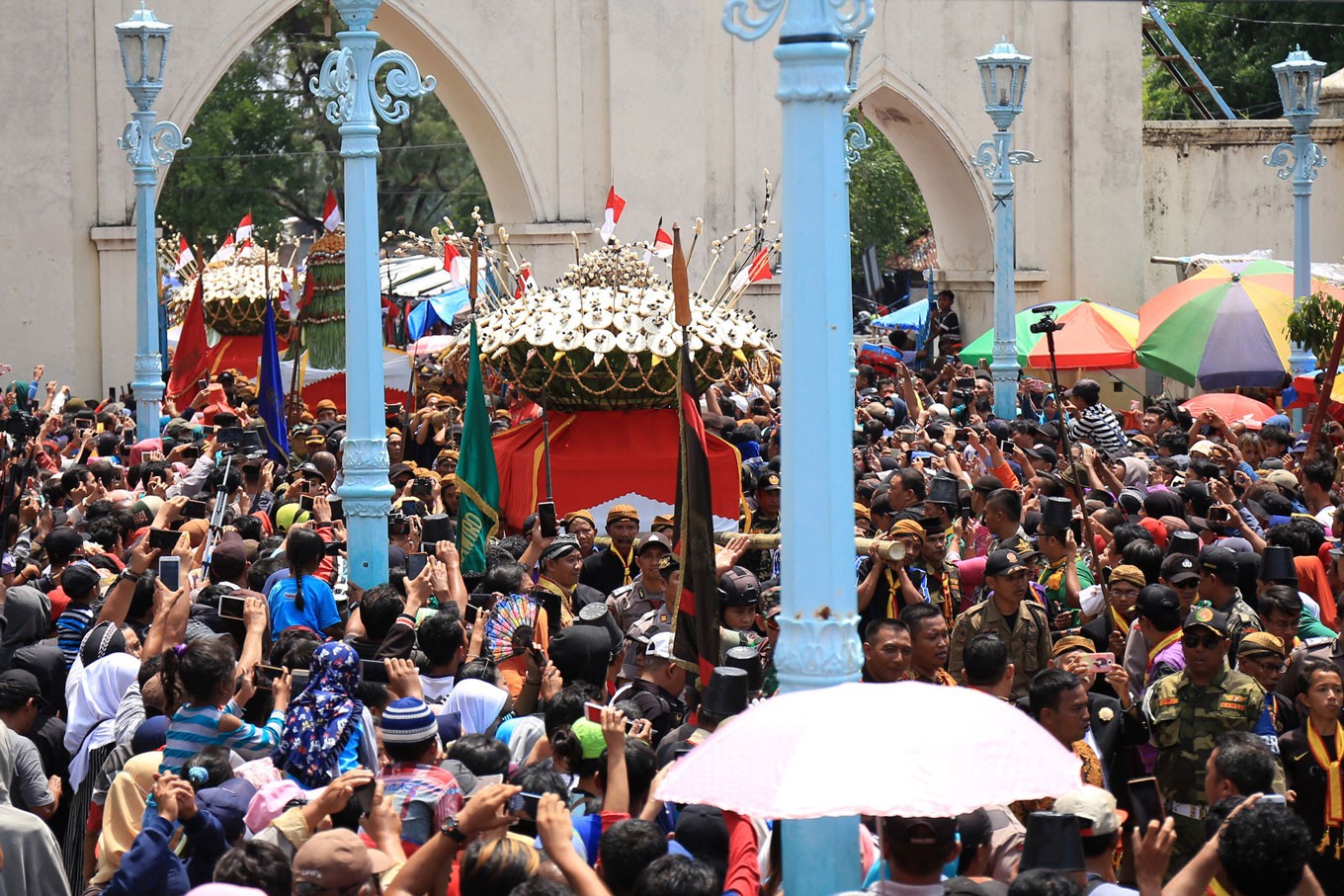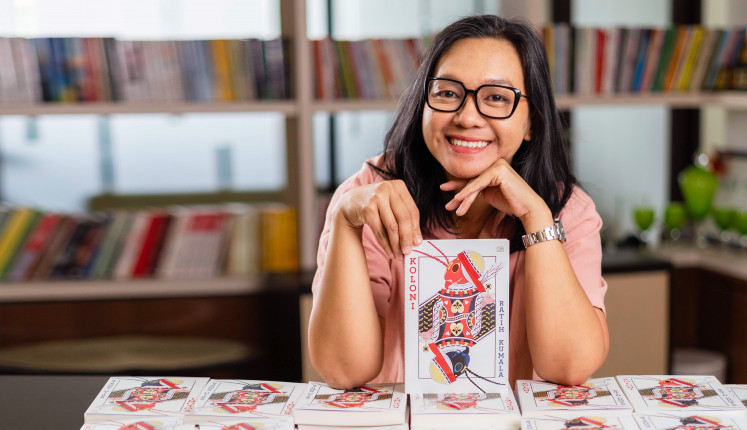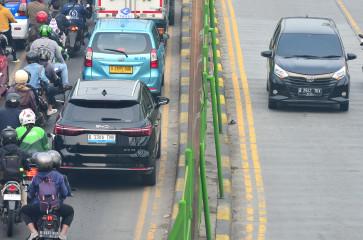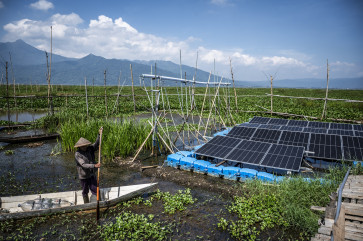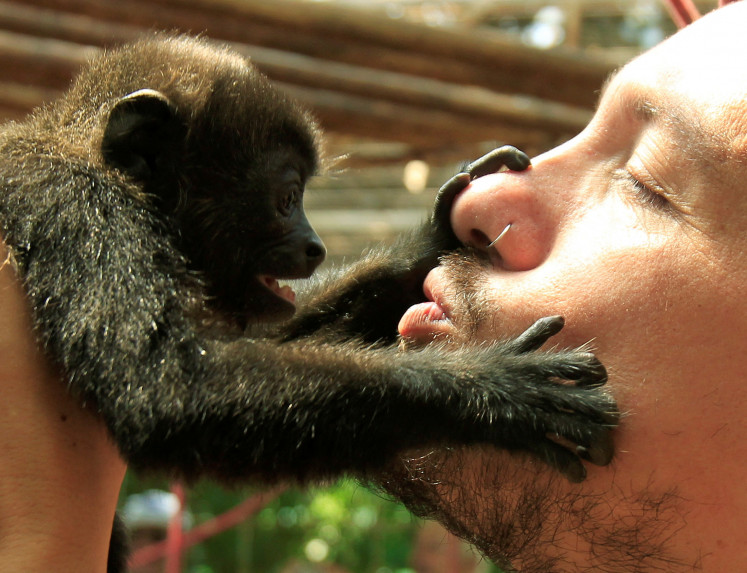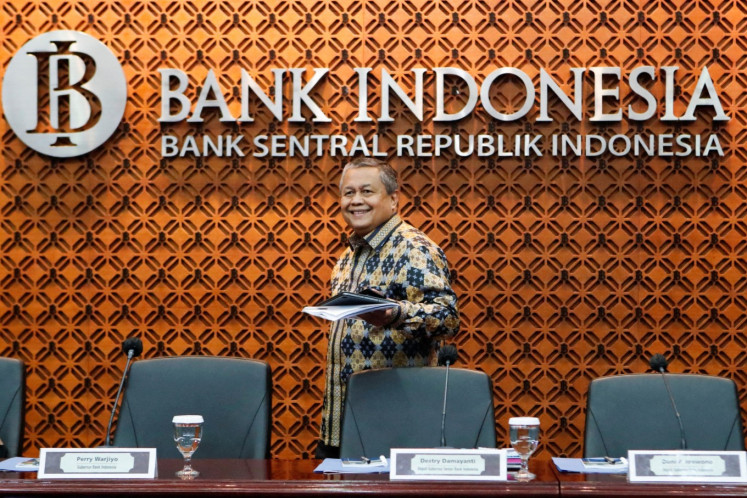Popular Reads
Top Results
Can't find what you're looking for?
View all search resultsPopular Reads
Top Results
Can't find what you're looking for?
View all search resultsSekaten celebrations cheer crowds in Surakarta
The month-long tradition of Sekaten commemorates Maulid Nabi Muhammad (the birthday of the Prophet Muhammad).
Change text size
Gift Premium Articles
to Anyone
S
ekaten is a popular annual tradition in Surakarta and Yogyakarta. The month-long tradition that commemorates Maulid Nabi Muhammad (the birthday of the Prophet Muhammad) has always been a time for the public to celebrate.
Throughout the night, the North Square of Surakarta, where Sekaten is held, is packed with people.
One of the highlights at the event is the night market, which features a crowd of attractions such as the tong setan (demon tong), drumolen (rotary comedy) and a Banyu waves Ferris wheel.
Hundreds of traders line up pottery piggy banks in the form of various animals and traditional children's toys. Night market special snacks are also available, such as sweet arum, popcorn and egg martabak (pancakes).
Sekaten, according to Pengageng of the order of the Surakarta Kasunanan Palace, Gusti Pangeran Haryo (GPH) Dipokusumo, comes from the Arabic word shahidatain (confession of faith). Another version of its possible origins, said Dipokusumo, is the word sekaten taken from the name of a set of the Demak Kingdom's heritage gamelan, Kyai Sekati, which means that living people must be able to weigh the good and the bad.
The younger brother of Paku Buwono XIII said Sekaten was a symbol of Islam performed by the guardians, especially Sunan Kalijaga, during the Kingdom of Demak. At that time, each time before the Prophet's Maulid, the gamelan was placed in the mosque to gather people.
Read also: Contemporary 'wayang' lures millennials to kindergarten's exhibition
For days people packed the mosque yard and the square to listen to the strains of the Kyai Sekati. Sunan Kalija completes the event with a market that sells regional specialties and art attractions.
Sekaten eventually became a hereditary tradition circa the 15th century on the north coast (Demak), to inland communities (Pajang and Mataram).
As it developed, the two kingdoms of the fractioned Mataran, Surakarta and Yogyakarta, packed Sekaten with a number of other traditions, such as eating food and fighting over gunungan (mountain of offerings).
The Surakarta Palace started Sekaten on Tuesday, with the beating of a pair of gamelan, the Kyai Guntur Madu and Kyai Guntur Sari, in the Great Mosque complex. When the first sound of the gamelan is heard, the community immediately scrambles for the coconut leaves that adorn the ward where the gamelan is kept and chew betel nuts.
"Eating betel can help you stay young and is for longevity. It must be done when the gamelan is beaten first. That's a blessing from the palace," said Parwanti, 65, a resident.
The culmination of the Sekaten tradition is a fight over a pair of gunungan that are paraded from the palace to the Great Mosque on Tuesday. The gunungan estri (female) consists of rengginang crackers and meals of dried sticky rice, while the gunungan jaler (male) is in the form of crops such as fruit, vegetables and potatoes.
Since morning, thousands of residents pack the courtyard of the Great Mosque to witness the Grebeg Maulud. Shortly after the gunungan is prayed for and taken out of the mosque, residents immediately go after it.
However, even after Grebeg Sekaten is finished, the excitement of the Sekaten Market continues. Every night, the people's market opposite the Great Mosque of Surakarta is always festive. Residents come not only from Surakarta, but also the surrounding cities of Sragen, Karanganyar, Sukoharjo, Klaten, Boyolali and Wonogiri, as well as from other cities such as Semarang, Surabaya, Bandung and Jakarta. (liz/kes)

